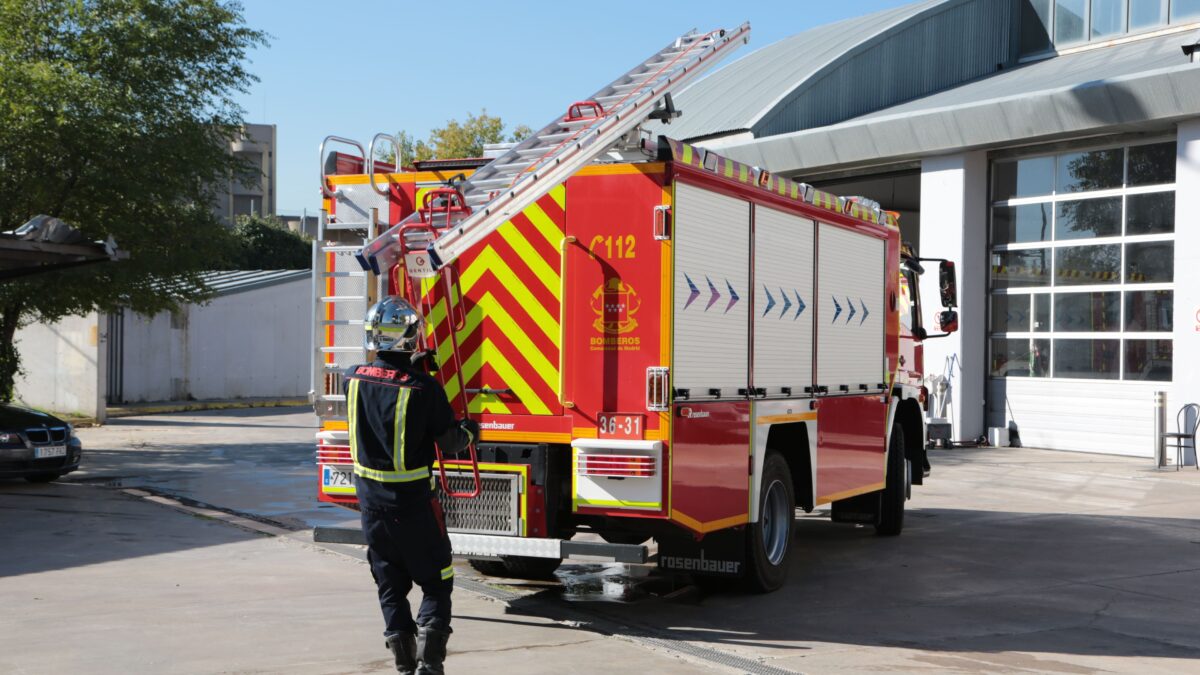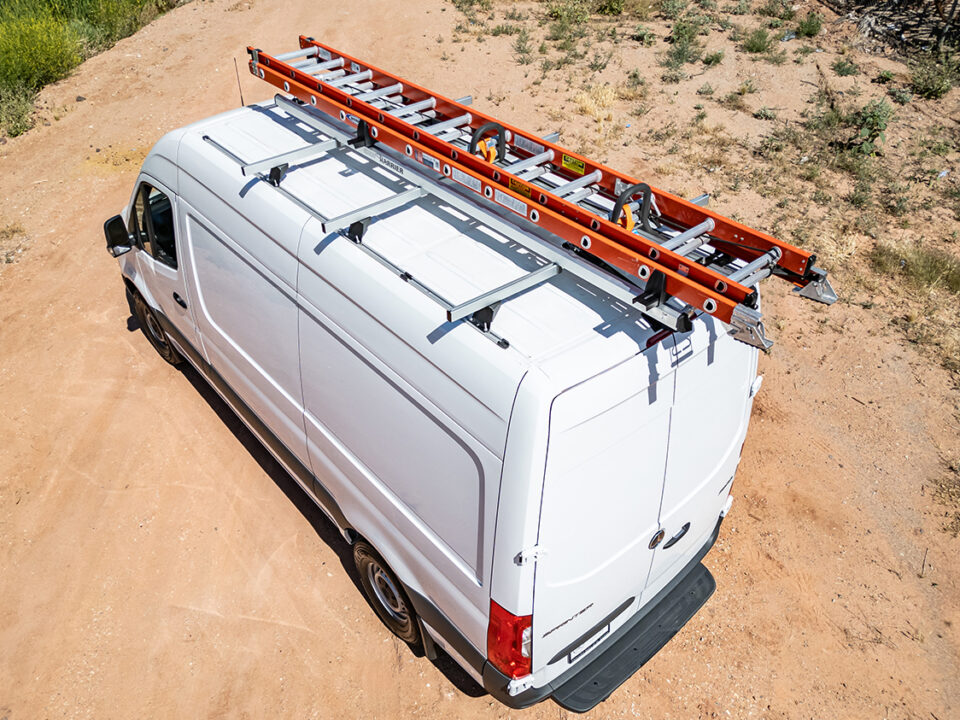
When using high-roof utility service bodies, the hydraulic universal ladder rack increases efficiency and safety.
30 October 2025Cool Ladder Racks for Commercial Vehicles
20 November 2025Features of Ladder Racks for Firefighting Trucks
A fire truck ladder rack is much more than just a straightforward storage solution in the extremely challenging field of firefighting; it is a strategic, mission-critical device that can literally mean the difference between life and death. The emergency truck ladder racks installed on fire apparatus must handle heavy, long ladders, function flawlessly under extreme stress, and deal with severe space constraints on contemporary fire trucks—especially when ladders are stored on high roofs that may reach eleven feet or more—in emergency situations where speed, strength, and accuracy are crucial. When they arrive on the scene, firefighters must act quickly and confidently. Their ground ladders are long and heavy, often weighing over 100 pounds for high-capacity models. They are frequently extension ladders, roof ladders, and folding ladders. These ladders are essential for ventilating rooftops, obtaining access to higher floors, making dramatic rescues, and offering elevated escape routes. There is no place for indecision or mechanical failure in such high-stakes employment. Rapid deployment of a well-designed fire vehicle ladder rack minimizes physical strain and lowers the danger of harm.
Conventional bracket systems alone are frequently insufficient because to the size and weight of these ladders. It can be difficult, time-consuming, and perhaps dangerous to raise or lower a 24-foot extension ladder from a high storage shelf. For this reason, advanced lowering techniques are already commonplace. Fire departments frequently use over-the-top or side-mounted lowering mechanisms. These ladder-lowering devices are available in manual, electric, or hydraulic versions, according to the FAMA Buyer’s Guide (TC056). Although they are less complicated and more affordable, manual gantries are physically demanding and may require multiple firefighters to operate. One firefighter can deploy a ladder without having to climb or stretch thanks to electric actuators, which make it convenient to lower ladders with a switch.
(FAMA) Although more costly, hydraulic systems provide stronger load capacity, smoother, more parallel motion, and a lower chance of “creep,” or undesired rack wandering during vibration or travel. The over-the-top rack is one of the most effective setups; ladders are kept on the fire truck’s roof and lowered by a boom or gantry as needed. This method saves important side compartment space, which is frequently required for additional life-saving devices like fans, hoses, breathing apparatus, extrication tools, and medical equipment. Over-the-top systems, according to FAMA, enable effective utilization of interior volume by keeping side compartments free.
Nevertheless, there are trade-offs associated with this configuration: it elevates the apparatus’s elevation, affects its center of gravity, and puts more strain on brackets, particularly when transporting it at high speeds or over uneven roads.
A ladder system malfunction is not only uncomfortable but potentially disastrous in emergency situations where firefighting teams must operate quickly and precisely. Mechanical dependability, redundancy, and smooth actuation must be given top priority in the design, manufacture, and purchase of a firefighting vehicle ladder rack. There is never enough room on fire vehicles. Ground ladders, rescue tools, pike poles, folding ladders, medical equipment, fans, extrication equipment, suction hoses, and fire hoses are just a few of the many pieces of equipment that modern equipment must fit into its constrained internal volume. This is particularly true for truck companies (engine-ladder or quint), where the equipment committee has to make tough choices between ladder complement, compartment count, and water tank size. The quantity of space available under turntables, in side compartments, and in roof structures is one of the main limiting variables in ladder specification, as Firehouse explains. Tool storage space is frequently immediately challenged by conventional side-mounted racks. On the other hand, manufacturers can maximize the storage of hoses and other essential equipment by freeing up side compartments with overhead racks (over-the-top systems). Modern fire equipment’s height presents a technical problem in and of itself. Mounting lengthy ladders on top of a vehicle with a high roof—up to eleven feet, for example—requires careful engineering. The ladder rack must sustain the ladders’ static weight, withstand dynamic loads while the truck is moving, and function safely during deployment.
Strong brackets, reinforced structural mounting, and dependable lowering mechanisms are all necessary for a sturdy high-mount rack. For instance, interlock mechanisms that stop the ladder rack from rising or lowering while compartment doors are open or the parking brake is not engaged are occasionally installed by fire departments. In order to prevent operators from moving the equipment until the ladders are secure, safety lights or alarms frequently indicate that the rack is not stowed. Every step taken by the fire team in a true emergency must be almost instinctive. A firefighter uses a switch or lever to activate the lowering mechanism when a fire truck arrives. The rack gently descends, the heavy ladder is ready at waist or shoulder height, and another firefighter quickly lifts it off.
The deployment of ground ladders may be impacted by time wasted in this situation, which could have an influence on rescue, ventilation, or egress. Therefore, the design of the fire truck ladder rack is closely related to both operational effectiveness and firefighter safety rather than only being a convenience.
Selecting the appropriate ladder rack for a firefighting truck is a strategic investment from a procurement and business standpoint. Departments need to assess their mission profiles: are they urban, with big buildings and winding streets? Are they located in rural or suburban areas? What is the height of the firehouses in the area? What is the environment of risk? Whether a side-mounted, over-the-top, or through-body rack makes sense depends on several criteria. These trade-offs are described in the FAMA buyer’s handbook (TC056): While over-the-top systems offer maximum compartment area but increase cost, structural complexity, and height, side-mounted units are frequently the least expensive but restrict compartment volume.
Procurement teams also need to have a long-term perspective. Although manual lowering racks are less costly, they require more physical labor and may operate more slowly under pressure. Although electric systems are convenient, locks may be necessary to stop unwanted movement, or “creep,” during transit. Hydraulic systems offer the smoothest performance and frequently the highest reliability, despite their high cost. Additionally, manufacturers may include optional features that considerably lower operational risk, such as safety interlocks, visual or audible alarms, and retroreflective materials on protruding ends.
Another important component is maintenance. A fire truck ladder rack must endure exposure, vibration, road shock, and heat cycles; it is not a “set-it-and-forget-it” addition. Abrasion can deteriorate rungs, beam geometry, or locks if ladders move or shift while in transit. These problems can be avoided with a rack that has sturdy mounting, strong brackets, and adequate padding. Fire departments can modernize without having to buy new trucks thanks to some technology that can even be retrofitted onto old equipment.
Purchasing a ladder rack for a fire vehicle is ultimately a risk-reduction choice. Ensuring that the firefighting squad can quickly, safely, and reliably deploy their ladders during a high-pressure situation is more important than just keeping tools. Investing in a sturdy, well-designed firefighting truck ladder rack pays off in terms of operating speed, firefighter safety, long-term ladder longevity, and equipment flexibility. This is the obvious technical-commercial rationale. In summary, emergency vehicle ladder racks are crucial performance enhancers and much more than fire truck accessories. The design, selection, and upkeep of ladder racks are strategic objectives due to the length and weight of contemporary ladders, the spatial constraints of existing fire equipment, and the need to function flawlessly when seconds count. Fire departments can purchase ladder rack systems that provide them with the speed, safety, and dependability they require to fulfill their job by being aware of the trade-offs between side-mounted and over-the-top, manual and hydraulic, and cost and capabilities.
The Gentili hydraulic roof-mounted ladder rack for firefighting trucks is a cutting-edge solution made to optimize operational effectiveness on contemporary fire trucks, where storage capacity is becoming more and more constrained. This unit frees up important side compartments for rescue tools, medical equipment, and firefighting accessories by mounting the ladder system on the vehicle’s roof at heights that can surpass 11 feet. Through a fully hydraulic mechanism designed for high reliability, the Gentili system guarantees easy and safe ladder handling despite its lofty placement.
The Gentili ladder rack is designed to carry long, heavy firefighting ladders that are frequently utilized during emergency operations. Its load capacity is 70 kg, or roughly 154 pounds. The ladder is effortlessly lowered to an ergonomic working height by its hydraulic actuation system, which then safely raises it back to the roof structure. This action takes less than 15 seconds to complete, enabling quick deployment even in high-stress situations where firefighters must work flawlessly and with little physical effort.
One of the main design criteria is safety. In order to prevent unintentional release during vehicle movement, the system includes controlled hydraulic motion, anti-crush geometries, secure locking points, and stability components. These safeguards lower the possibility of accidents brought on by manually operating heavy machinery at high altitudes while guaranteeing adherence to contemporary fire service safety regulations. A dependable roof-mounted ladder deployment system is essential in emergency situations where crews need to quickly and precisely undertake rescue operations, ventilate roofs, or reach upper floors.
For fire departments looking to enhance vehicle layout efficiency, safety, and ergonomics without compromising equipment accessibility, the Gentili hydraulic roof-mounted ladder rack is a high-value option. The Gentili system distinguishes itself as a standard in the field of professional firefighting apparatus equipment with its blend of quick operation, safe handling, and efficient use of space.





